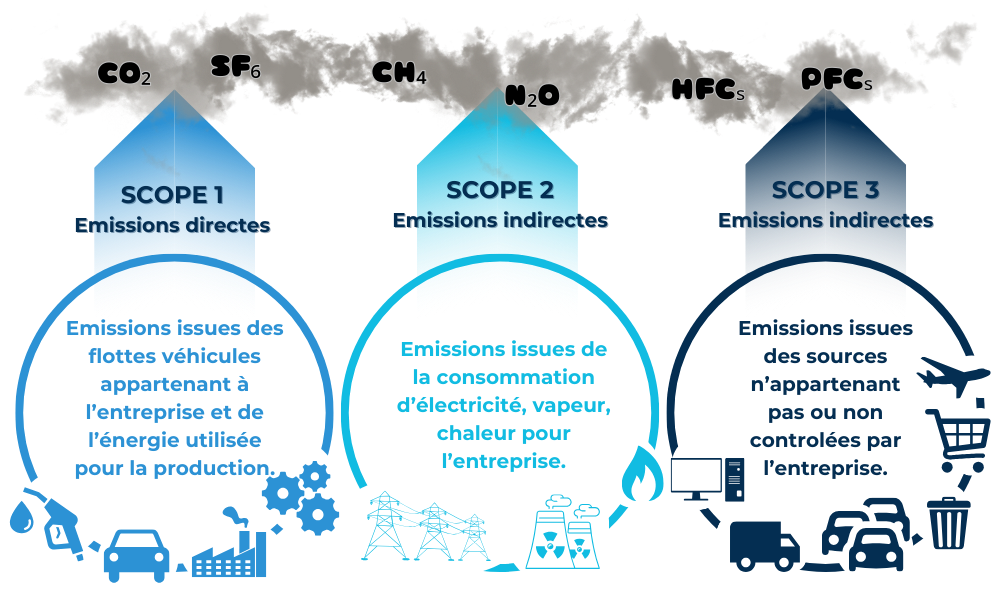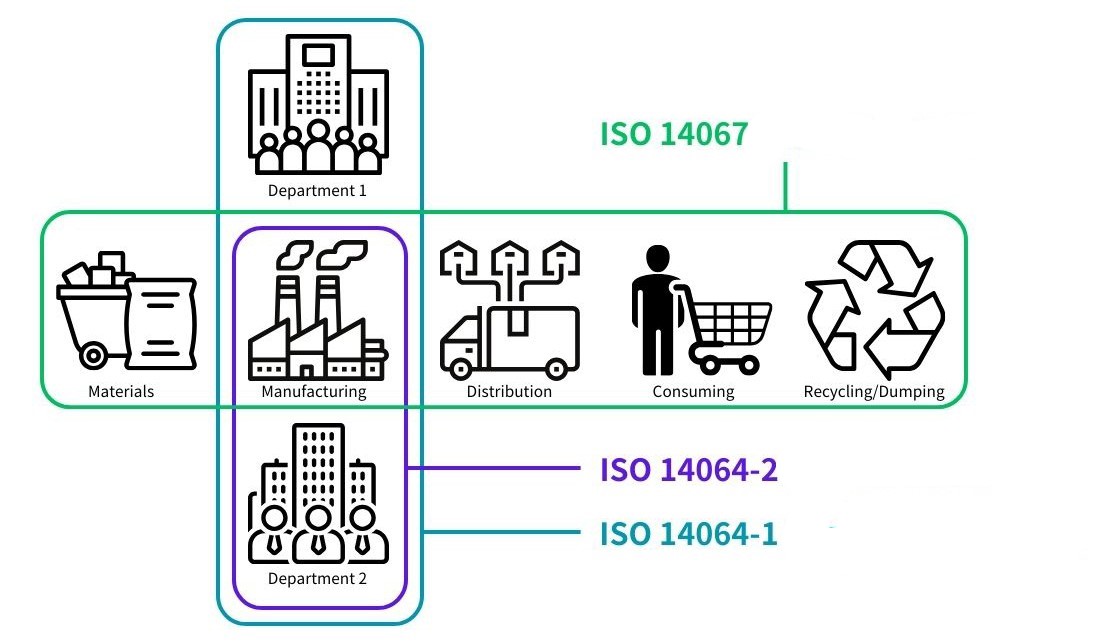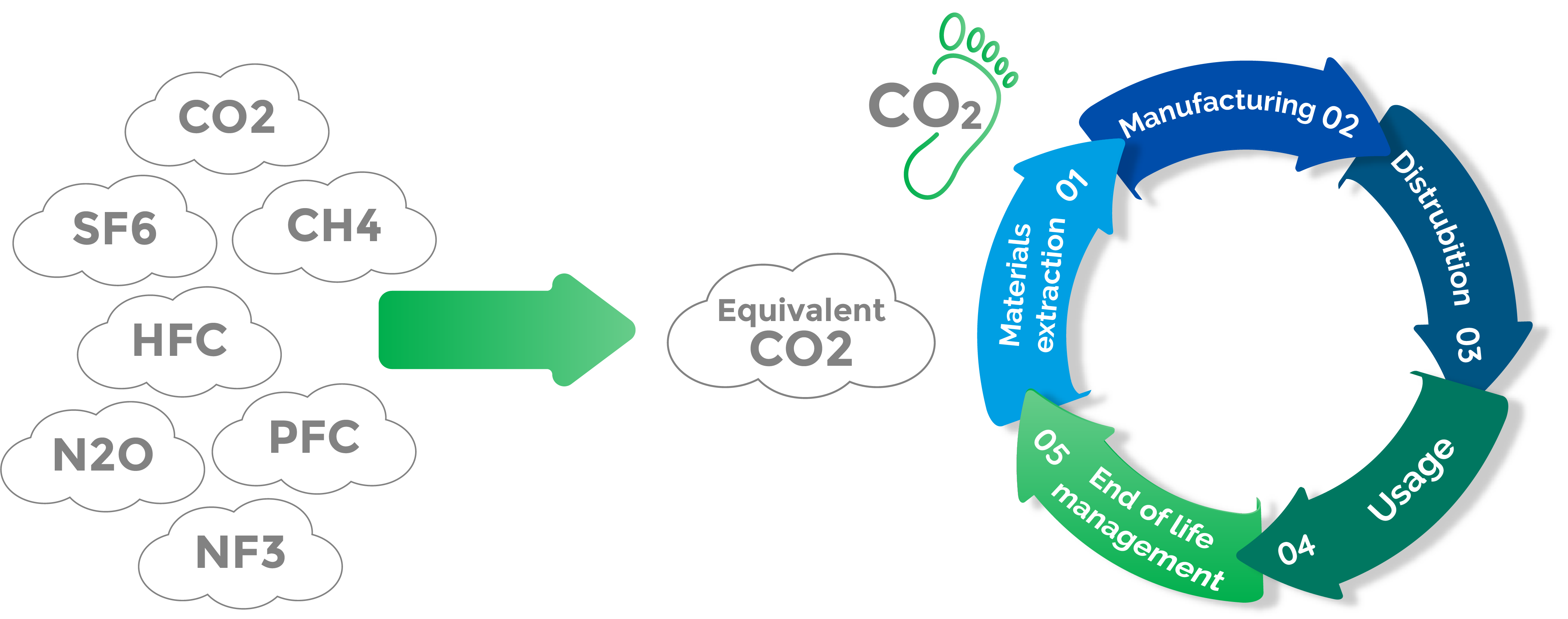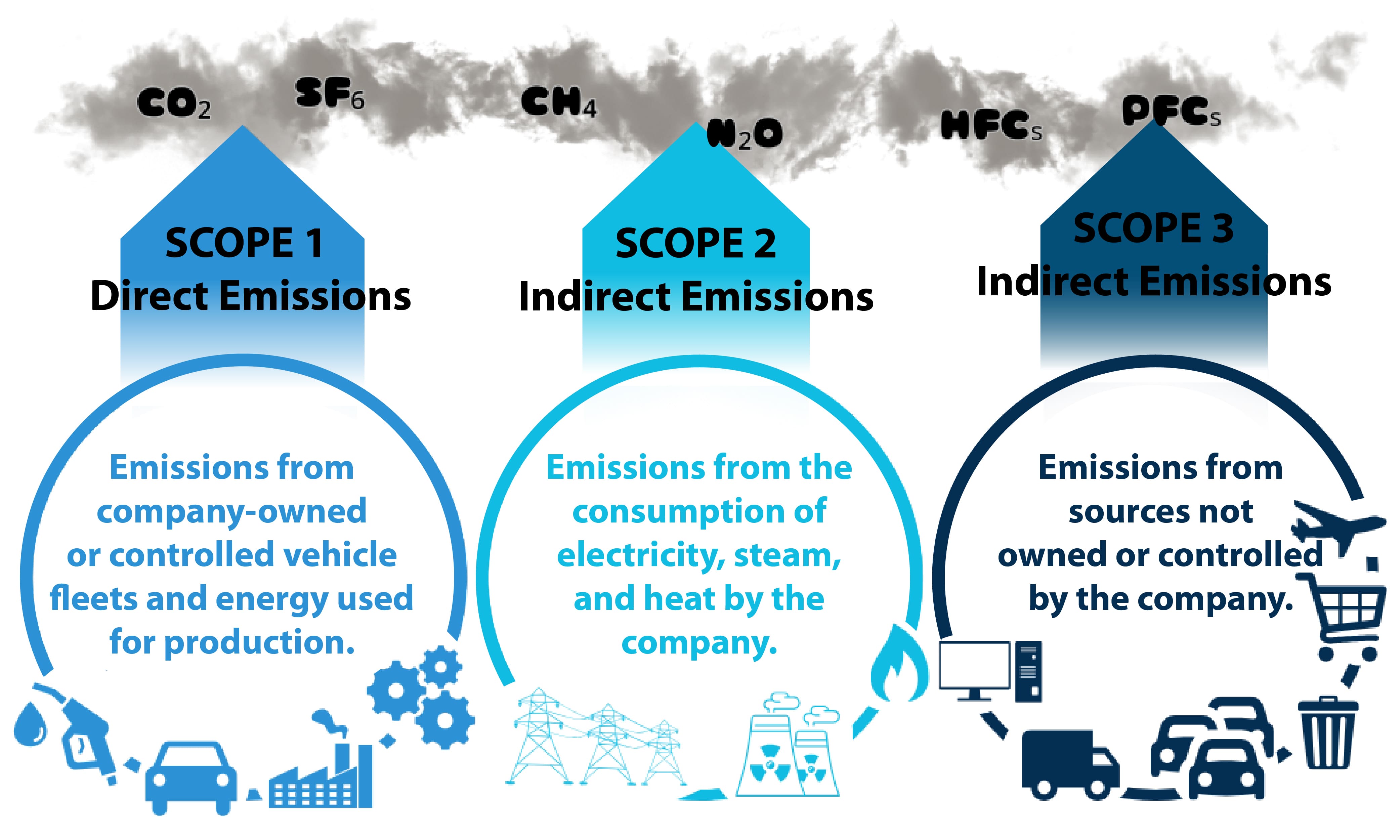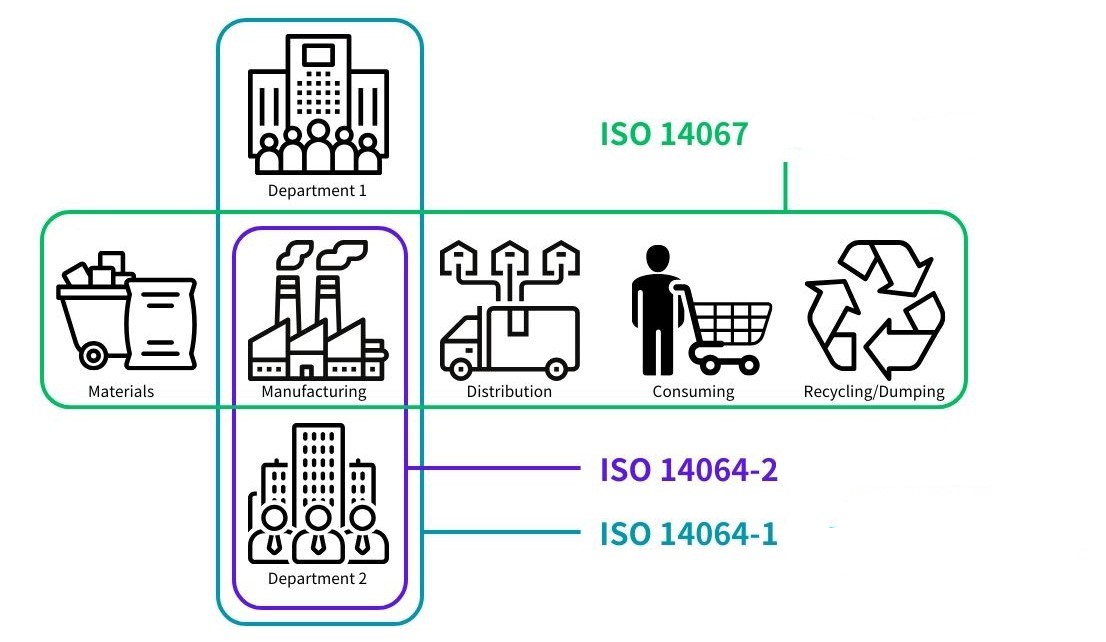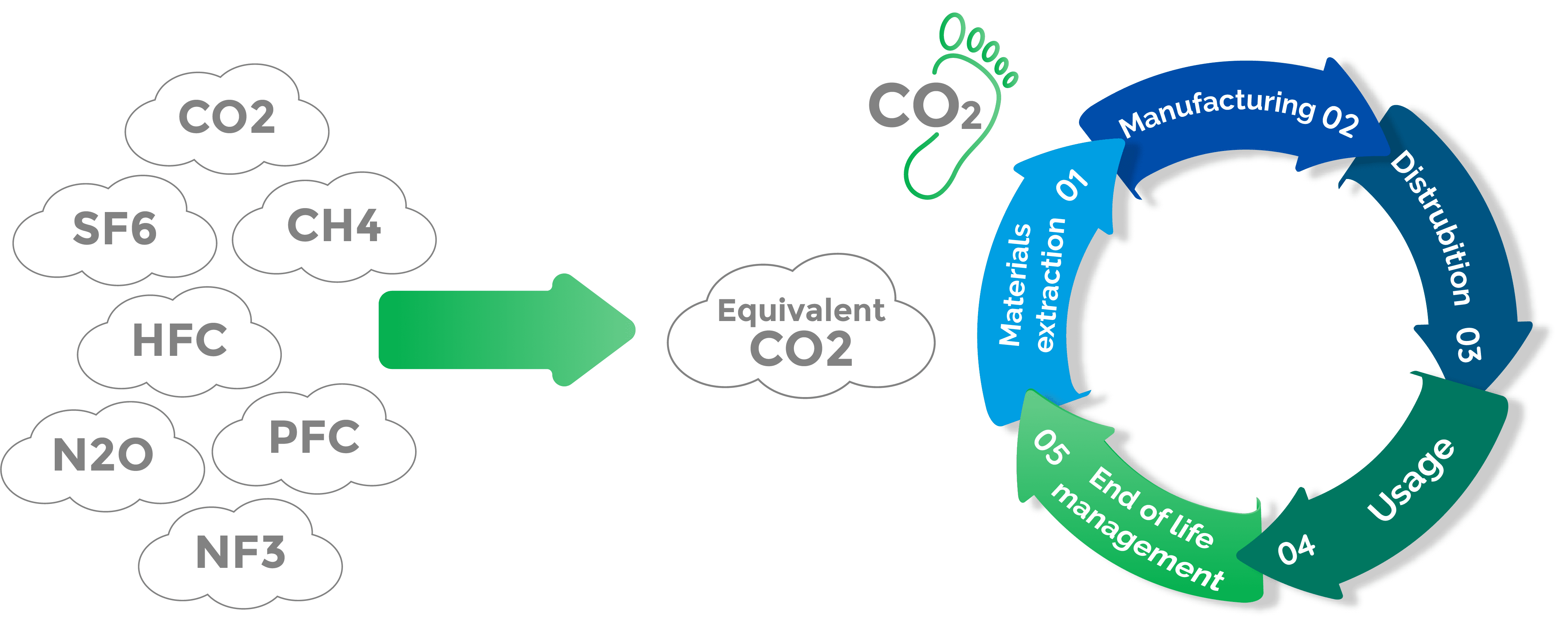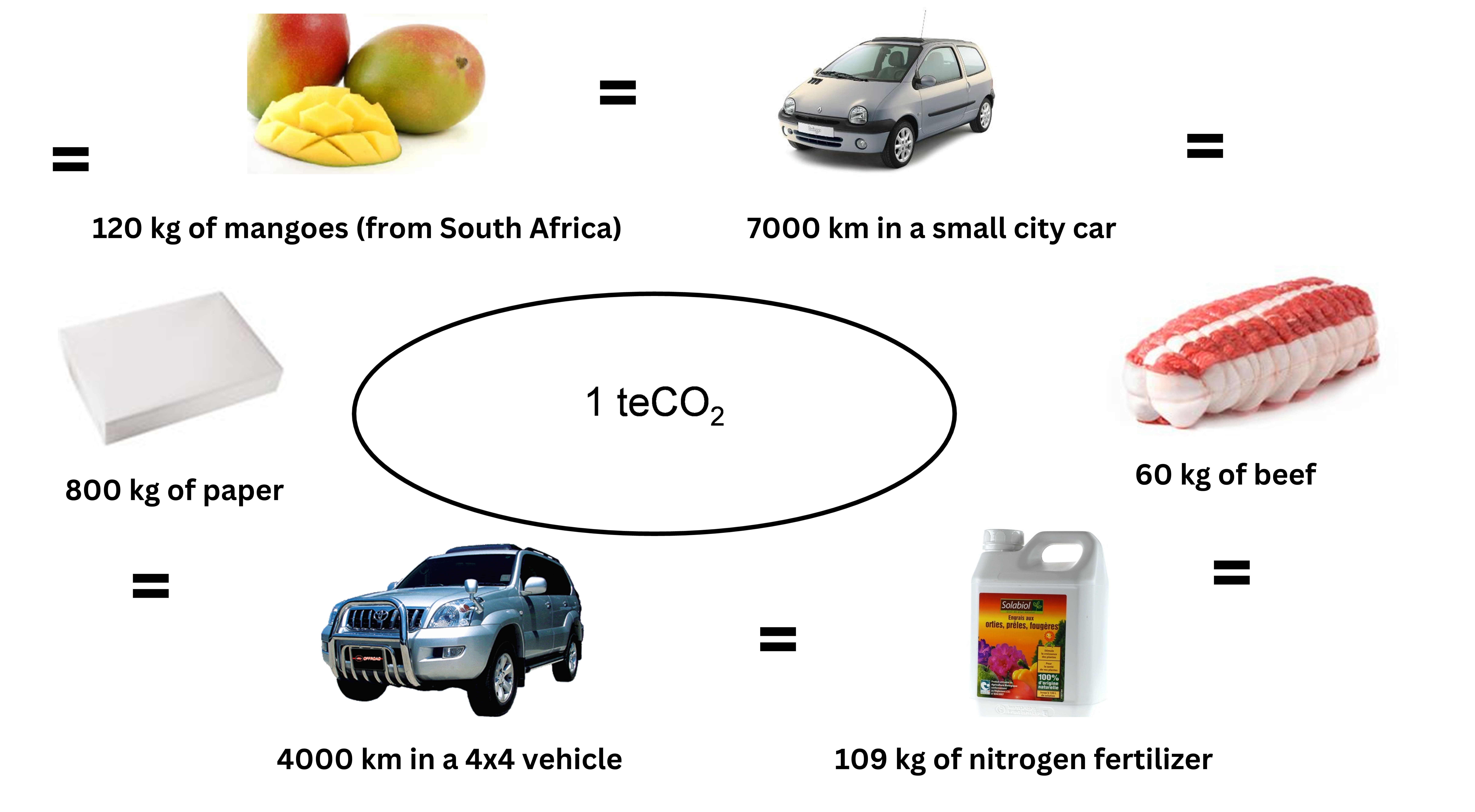Company Carbon Footprint :
A carbon footprint is a method of accounting for emissions of six greenhouse gases (GHGs), including carbon dioxide (CO2), methane (CH4), nitrous oxide (N2O), and fluorinated gases. It allows for the quantification and monitoring of these emissions generated, among other things, by a company's activities. To do this, emissions are classified into two categories :
- Direct emissions: emissions from sources owned or controlled by the company.
- Indirect emissions: emissions resulting from the company's activities but occurring at sources owned or controlled by others.
This assessment includes emissions from energy consumption, industrial processes, transportation, the purchase of goods and services, and other sources, providing a comprehensive view of the company's carbon footprint. It is therefore a structured tool in the fight against global warming and in the commitment to a plan of action to reduce emissions for a company. Indeed, by quantifying emissions, a company can easily identify its various sources in order to take action to reduce them. Thus, once emissions have been estimated and calculated, the company then reports its findings and establishes a transition strategy tailored to its energy performance, size, etc., following two complementary approaches: mitigation (emission reduction) and adaptation (preparation for the impacts of climate change).
Two accounting methodologies are widely used as references for calculating and quantifying a company's emissions:
Différences entre les méthodologies
GHG Protocol
Très détaillé et largement utilisé à l'international, idéal pour les entreprises opérant dans plusieurs pays. Il est reconnu pour sa rigueur et sa capacité à intégrer les émissions de toute la chaîne de valeur (Scope 1, 2, et 3).
ISO 14064
Offre un cadre de gestion global des GES avec des spécifications claires pour la vérification. Elle est particulièrement adaptée pour les organisations cherchant à obtenir une certification formelle et à assurer la crédibilité de leurs rapports d'émissions.
L’empreinte de l’activité ou du produit:


